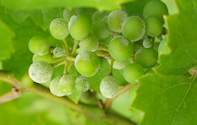What is Fungi?
A fungus is a microscopically small plant-like organism. It consists of a fungal spore and after germination also from branched hyphae. It usually germinates quickly under warm humid conditions and form fungus spores that are distributed by the wind and water.

A good example of a fungus is the mould that grows on bread if it is stored in a plastic bag for a few days. The humid and warm inside of the bag is ideal for the spores to germinate. Fungal spores are blown or splashed onto the wet vine leaf, cane or grape bunch and germinate under humid conditions.
It penetrates the leaf through the stoma (a pore, found in the epidermis of leaves), or leaf surface. Fungi feeds on plant cells and branch off in all directions, it extracts the nutrients and the cells become brown or gray. This dead tissue becomes brown and later black while white and fluffy hyphae grow out of the stoma.
Fungi can lie dormant in contaminated plant parts in, on the ground, or even in the buds. If the infection has already occurred, fungi are not easily controlled, but good control is obtained with contact fungicides. Systemic fungicides are absorbed by the plant which kills the fungi from within the plant.
The most common fungal diseases are powdery mildew (oidium), downy mildew (Plasmopara viticola), dead arm disease (streepvlek - Phomopsis viticola), botrytis (vaalvrot), Eutypa dieback (tandpyn) and ‘Black Goo’ (wortelvrot).
By Vinpro